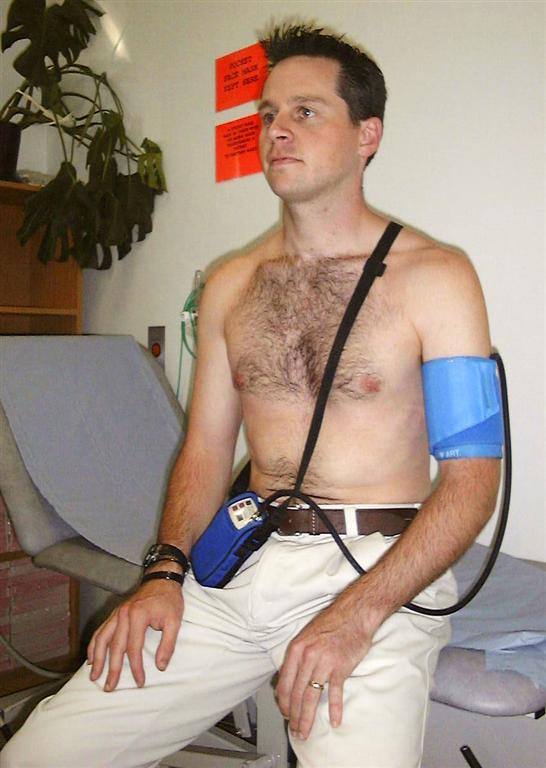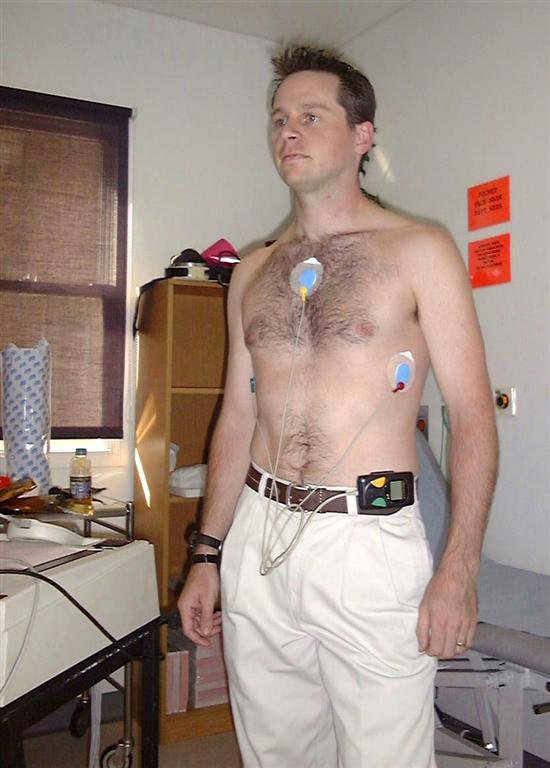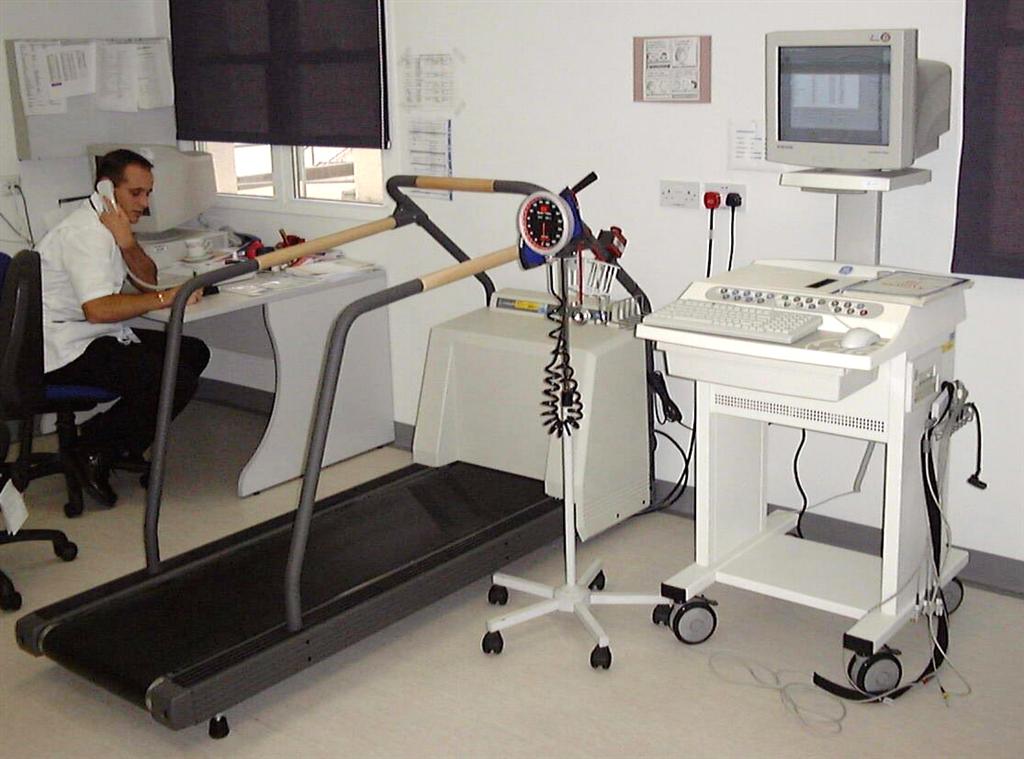Ambulatory blood pressure monitoring
 During this test your blood pressure is recorded over a 24 hr period. You wear a small monitor on a belt. This is attached to a cuff around your arm. During the day the cuff normally inflates every quarter of an hour allowing a recording to be made. During the night the cuff inflates less frequently. The recording shows how you blood pressure varies in every day life – as distinct from recordings made in the consultation room or surgery. We encourage you to be normally active whilst you are wearing the recorder. However you cannot use the shower, bath or go swimming whilst the recorder is attached. In a small percentage of cases the recording is unsuccessful for technical reasons and has to be repeated.
During this test your blood pressure is recorded over a 24 hr period. You wear a small monitor on a belt. This is attached to a cuff around your arm. During the day the cuff normally inflates every quarter of an hour allowing a recording to be made. During the night the cuff inflates less frequently. The recording shows how you blood pressure varies in every day life – as distinct from recordings made in the consultation room or surgery. We encourage you to be normally active whilst you are wearing the recorder. However you cannot use the shower, bath or go swimming whilst the recorder is attached. In a small percentage of cases the recording is unsuccessful for technical reasons and has to be repeated.

 Every few minutes, usually three, the band moves faster and becomes a little steeper. From the heart's response to these grades of exercise a lot of information about the heart is obtained. During the test your heart rate, blood pressure and changes in the ECG recording will be monitored. Allowing time for preparation and cool down the test may take up to 45 minutes.
Every few minutes, usually three, the band moves faster and becomes a little steeper. From the heart's response to these grades of exercise a lot of information about the heart is obtained. During the test your heart rate, blood pressure and changes in the ECG recording will be monitored. Allowing time for preparation and cool down the test may take up to 45 minutes.